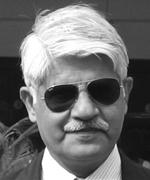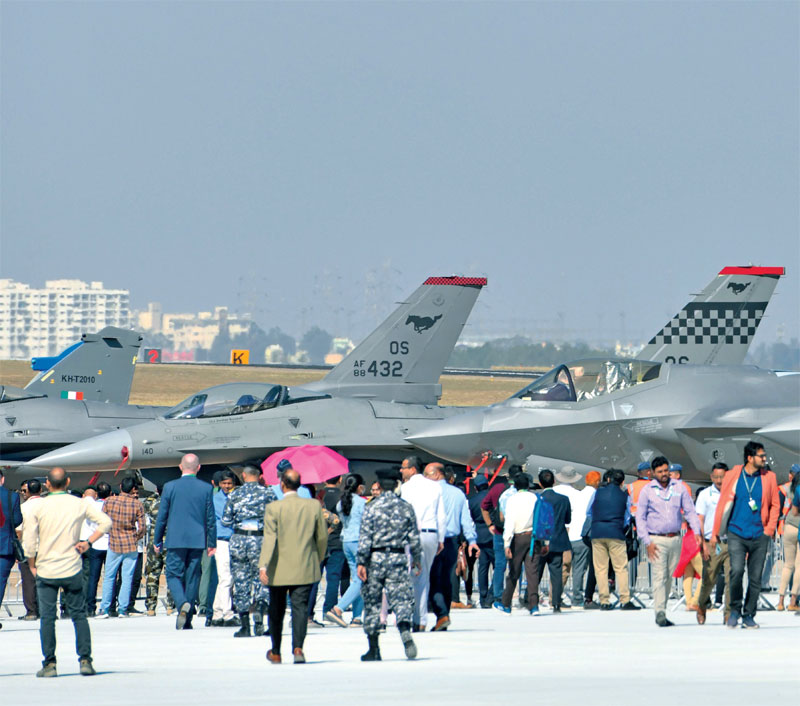Busy Runway, Lonely Skies
 Gp Capt. AK Sachdev (retd)
Gp Capt. AK Sachdev (retd)
The Chinese revel in symbolism. On 26 December 2024, the 131st birth anniversary of Mao Zedong, revered as the founder of the Peoples’ Republic of China, Chengdu Aircraft Corporation and the Shenyang Aircraft Corporation, two of its major fighter original equipment manufacturers (OEMs) made an impressive show of test flying one prototype of sixth generation fighters each. The timing and the deliberate public display over inhabited areas achieved the purpose of virally planting images of the two fighters over social media and needling the curiosity of China watchers.
Analysts have dubbed them Chengdu J-36 and Shenyang J-50 although the Chinese establishment has not designated any official numbers to them. They do not resemble any operational aircraft but have common features: tailless shapes, much like gigantic leaves, supersonic flight design, and leading-edge stealth. Speculation pegs the J-36 as a supersonic fighter bomber and the J-50 as a fighter. While the J-50 has two engines, the J-36 has a third engine on top in addition to two below the fuselage, an oddity not present in any operation fighter in the world. The test flights were flown in tandem with the J-20, a twin-engined all-weather stealth air superiority fighter boasting precision strike capability, which entered combat service with Peoples Liberation Army Air Force (PLAAF) in February 2018. The idea to fly J-20 along with the J-36 may have been to highlight the contrast in size as the latter is much bigger. The appearance of the two aircraft generated enormous interest but, beyond the buzz surrounding them, there are some sobering reflections for Indian aerospace and defence industry as it prepares for the next edition of Aero India Show.

Runway to a Billion Opportunities
The 15th edition of Aero India (February 10-14) has as its theme ‘The Runway To A Billion Opportunities’. The first Aero India show after Narendra Modi became prime minister was in 2015. Prime Minister Modi inaugurated it putting his full weight behind ‘Make in India’, making it the theme for the show.
‘Aatmanirbhar Bharat Abhiyan’ was propounded by Modi in May 2020 against the backdrop of Covid-19 onslaught; it was proclaimed to be an economic package from the government designed to provide an economic stimulus to a stifled economy. It essentially repackaged the old ‘Make in India’ into a new, more alluring, relabelled catchword. For the 2021 show, Modi personally announced ‘aatmanirbhar’ as the theme and, just before the show took off, he tweeted that, ‘India offers unlimited potential in defence and aerospace. Aero India is a wonderful platform for collaborations in these areas. The Government of India has brought futuristic reforms in these sectors, which will add impetus to our quest to become ‘aatmanirbhar.’
‘Make in India’ and ‘aatmanirbhar’ have become mantras for the present government and the 2025 show theme also reflects that leitmotif. The defence ministry expects to surpass the statistics of dignitaries from 98 countries, 809 exhibitors, signing of over 25 partnerships including 201 memorandum of understanding (MoUs) and technology transfer of Rs 75,000 crores. Clearly, the show is a big success, the largest of its kind in Asia and is making an impression globally. But how has it promoted Indian aerospace and defence in real terms?
Air Chief’s Angst
Aerospace and defence both impinge on air power, the ability to project power through the medium of the air (and space). The instrument that is tasked with the projection is a country’s air force. One would expect that with the Prime Minister himself supporting ‘Make in India’ (10 years) and aatmanirbharta (5 years), the Indian Air Force (IAF) would have inducted, or be near inducting, indige
Subscribe To Force
Fuel Fearless Journalism with Your Yearly Subscription
SUBSCRIBE NOW
We don’t tell you how to do your job…
But we put the environment in which you do your job in perspective, so that when you step out you do so with the complete picture.








